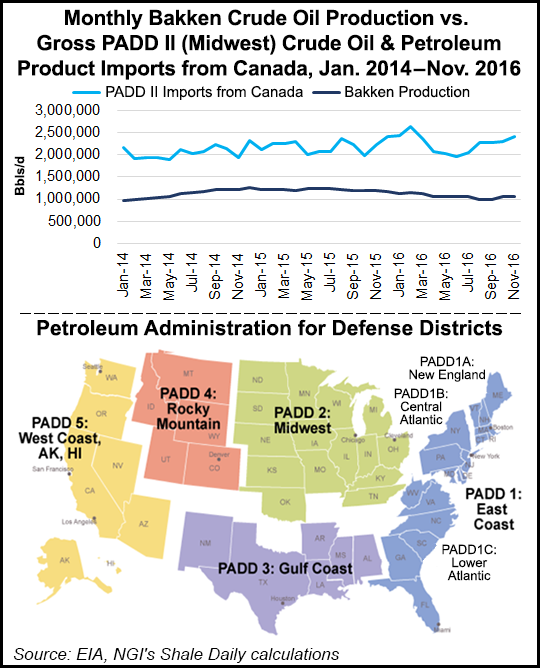Infrastructure | Bakken Shale | E&P | NGI All News Access | NGI The Weekly Gas Market Report
Dakota Access Final Construction Resumes; May 1 In-Service Planned
Since gaining its federal easement Feb. 8, builders of the $3.8 billion Dakota Access Pipeline (DAPL) have been drilling the tunnel to traverse 90 feet below the bottom of a dammed portion of the Missouri River in south-central North Dakota, a spokesperson for the project backers told NGI‘s Shale Daily.

Under current timetables, the nearly 1,200-mile oil pipeline from the Bakken oilfields to a hub in south-central Illinois could be in service on May 1.
As reported last monthwith the advent of the Trump administration’s push and the fact that all but the controversial water crossing had been constructed, the May date now confirmed by a spokesperson for Energy Transfer Partners (ETP), the main sponsor of DAPL, has been established as realistic.
Noting that drilling began “immediately upon receiving the [U.S. Army Corps of Engineers] easement,” the spokesperson said ETP is estimating 60 days from that date to complete the drilling (April 8) and another 23 days to fill the pipeline, which equates to May 1.
Filling the pipeline means sending Bakken sweet crude from northwest North Dakota to Patoka, IL, where it can be shipped east or to the Gulf Coast.
In January, Christi Tezak, managing director at ClearView Energy Partners LLC, predicted that an early February ruling favoring the DAPL project “would imply an in-service date of early May,” and Tezak had been projecting that the six-month-old dispute between ETP’s nearly completed pipeline project and the federal government would be resolved in the first half of this year.
Originally, an easement to cross a dammed portion of the Missouri River, Lake Oahe, was granted last July by the U.S. Army Corps of Engineers only to be rescinded at the eleventh-hour by the Obama administration in the face of stiff opposition from the Standing Rock Sioux Tribe, whose reservation is adjacent to the pipeline route and near the lake.
© 2024 Natural Gas Intelligence. All rights reserved.
ISSN © 2577-9877 | ISSN © 1532-1266 | ISSN © 2158-8023 |
